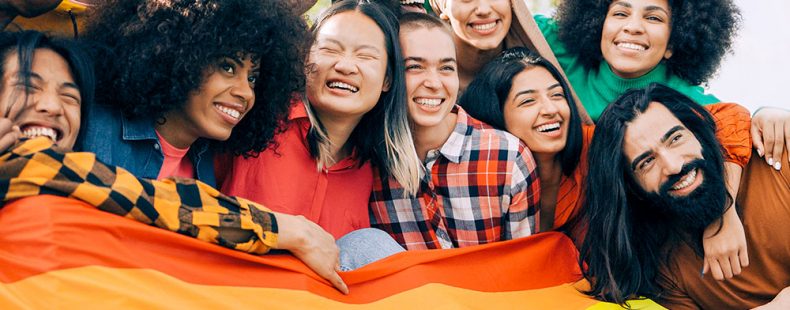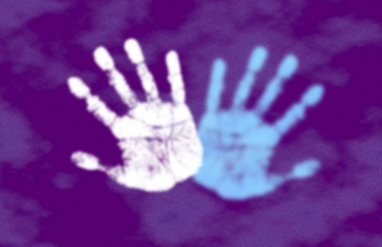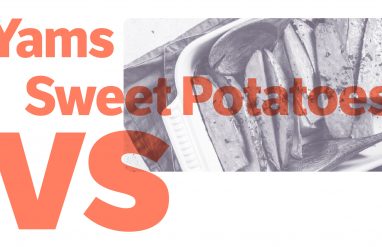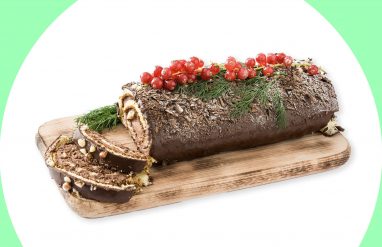by Min Straussman
The rainbow colors on the Pride flag represent the variety of identities across the LGBTQIA+ spectrum: not only lesbian and gay people, but also bisexual, trans, queers, intersex, and asexual people, among many, many others. The flag is also representative of the intersection of these identities, including people of color who identify with one or many of these overlapping and diverse categories. Pride is a time of celebration and visibility for everyone who falls under the LGBTQIA+ umbrella. In this article, hear from gender-diverse people, including those from Black, Latinx, Asian, and Native American communities, talking about what Pride means to them and why visibility and recognition of their whole identities is so important.
Standing together
United we stand. Divided they catch us one by one. —campaign slogan of José Sarria, 1961
José Sarria was the first openly queer political candidate in the United States when he ran for the San Francisco Board of Supervisors in 1961. A Latino drag queen known for his openness about his identity, Sarria’s campaign slogan was a message to the LGBTQIA+ community that they had to stand together in order to advocate for change and resist anti-queer sentiment.
Visibility
For centuries, the norm was to force LGBTQIA+ people to live “in the closet,” a euphemism describing a hidden or secret life that is coded as shameful. The concept of visibility is in direct contrast to this idea. Living one’s true identity in an open and easily recognizable way is a way of demonstrating pride in who one really is and of making others sit up and take notice.
When I walk down a busy street in my silver heels, fur chubby, feathers and fingernail polish, with my bracelets and earrings and my jewels and my shirt open to show a small patch of chest hair, my eyes thickly outlined in black with a rainbow swatch over each and probably my beard not too closely shaven, then… I am truth walking down the street. I say, look at me; and why not. Why shouldn’t everyone see me? I like the way I look, the way I feel. That’s the point. —Christopher Lonc, Gay Sunshine, Spring 1974
[F]rom an entire Denny’s dining room staring at me with malice, or being told by a professional contact that I shouldn’t be allowed to use the bathroom because I look threatening, […] it felt as though my existence was something to excuse. […] But I am done with that thinking. I will not shrink into the wallpaper, and I am not sorry for being Victoria, to anyone. —Victoria Scott, transwoman photographer and automobile reporter, TheDrive.com, November 23, 2021
Not being visible is dangerous. Not seeing models or hearing stories or seeing reflections of yourself over time and being oppressed without visibility—just that within itself takes its toll. —Mia Nakano, queer Asian photographer, KQED.org, June 29, 2017
Overlapping identities
The concept of intersectionality describes how our identities exist along multiple axes: gender, sexuality, ethnicity, language groups, and so on. Acknowledging our intersectionality is one way of having pride in who we are. This can include using culturally grounded language for describing ourselves, as some Native American queer people who use two-spirit to describe their gender identity, or reconnecting with traditional language or practices as immigrants or ethnic minorities in a way that also incorporates queer identity.
As a queer immigrant in rural Central Florida, poetry was the vehicle of my survival. […] In the cane field of Skeldon women sang sohars for the births of the children. In New York, I wrote a sohar poem for my niece who was born. I also write biraha against homophobic violence. I write to remind myself and my family that we are alive, that we have a deep history of oppression that we are even now working through. Poetry allows me to wade into treacherous waters and to bend driftwood and seaweeds into vessels to bear me to the far shore. —Rajiv Mohabir, Indian-Guyanese gay writer, Scroll.in, July 23, 2017
It’s when I’m trying to describe myself in English that it all becomes rather difficult, using those words to describe myself in a language that exists within binaries. Traditionally, we wouldn’t have to exist on either end of that binary. —Geo Soctomah Neptune, two-spirit Passamaquoddy, basket weaver, and school board member, them.com, July 4, 2018
Being two-spirit, it’s not about gender roles. It’s about the responsibilities that we play. And sometimes [for] those responsibilities, [using] they is appropriate. When I’m doing advocacy as a woman, that’s really important. —Nenookaasi Ogichidaa, two-spirit Black Ojibwe activist and powwow dancer, HuffPost.com, June 5, 2019
Gender diversity
The term gender diversity refers to the fact that some people do not identify as either a woman or man but rather in one or many of a variety of ways. One example of this is nonbinary or NB, a gender identity that does not fit into the binary male/female division. People who are nonbinary may use they/them pronouns to express their identity, although there is a large variety of neopronouns that genderqueer people may adopt.
I consider nonbinary identity to be an unabashedly political identity. It is for anyone who wishes to wield self-understanding in service of dismantling a mandatory, self-reproducing gender system that strictly controls what we can do and be. —Robin Dembroff, philosopher, Aeon.co, October 30, 2018
As I’m reflecting on my experience of changing my name and gender marker, I’m reminded of the niceties I got from that woman helping me get a new license. I felt warm, relaxed, finally able to see something that seems like me on a document that’s supposed to be proof that I’m a person. […] All trans people deserve to feel the way I felt then, with no politician bursting that earned bubble afterwards. —KB Brookins, Black trans writer/activist, Autostraddle.com, December 21, 2022
I don’t find “it” to be dehumanizing or degrading, but rather an honest expression of who I am. We use “it” to refer to the stars in the sky, to songs that make us weep, to our hearts. “It” can be beautiful, and “it” is who I am: a person, complete and whole, without gender. —Twitter user @GayTrebuchet, quoted in Yahoo! News, August 17, 2021
Activism
As it is often said, Stonewall—a key turning point in the fight for LGBTQIA+ rights in the United States and globally—was an uprising. The first Pride marches were political events. This thread of activism persists today as LGBTQIA+ people continue their struggle for equal recognition and rights, not only for their community but also for other marginalized communities and causes. While progress has been made, LGBTQIA+ people continue to face discrimination in the United States and around the world, and so the fight continues.
As a trans Latina woman, I had been putting a lot of emphasis on assimilation. I lived in fear of being undocumented and of being trans. [But] once I began to see how our communities were being targeted by the state and the structural violence that we’re facing, I couldn’t continue to stay quiet. I had to take action. —Jennicet Gutiérrez, Brown Political Review, April 5, 2016
I got into activism through wanting to prevent the destruction of our natural world in pursuit of profit, and always knew that liberating our bodies was intrinsically bound up in that fight. —Nim Ralph, trans writer and environmental activist, BenJerry.co.uk
We are still fighting for LGBT rights. We are still fighting for women’s rights… And we will continue to fight for equity and for human rights for black and brown people. But we are making progress… And so it leaves me with some optimism, too. —Andrea Jenkins, Black transwoman, city council member, Minneapolis, The New York Times, June 16, 2020
These quotes capture just a snapshot of the diverse identities and perspectives of LGBTQIA+ people. Hopefully, they inspire us all to do more, whether as a member of the community or as an ally, to have Pride and take action for a more just world.
Min Straussman is a freelance writer and educator from Pittsburgh, Pennsylvania. A frequent contributor to Dictionary.com and Thesaurus.com, his work has also appeared in Hey Alma, beestung, and other publications. He lives in Paris. For more by Min, read: Terms For Understanding The Diversity Of Jewish American Life | A Language Of Pride: Understand The Terms Around LGBTQ Identity |7 Meaningful Ways To Express Your Gratitude














